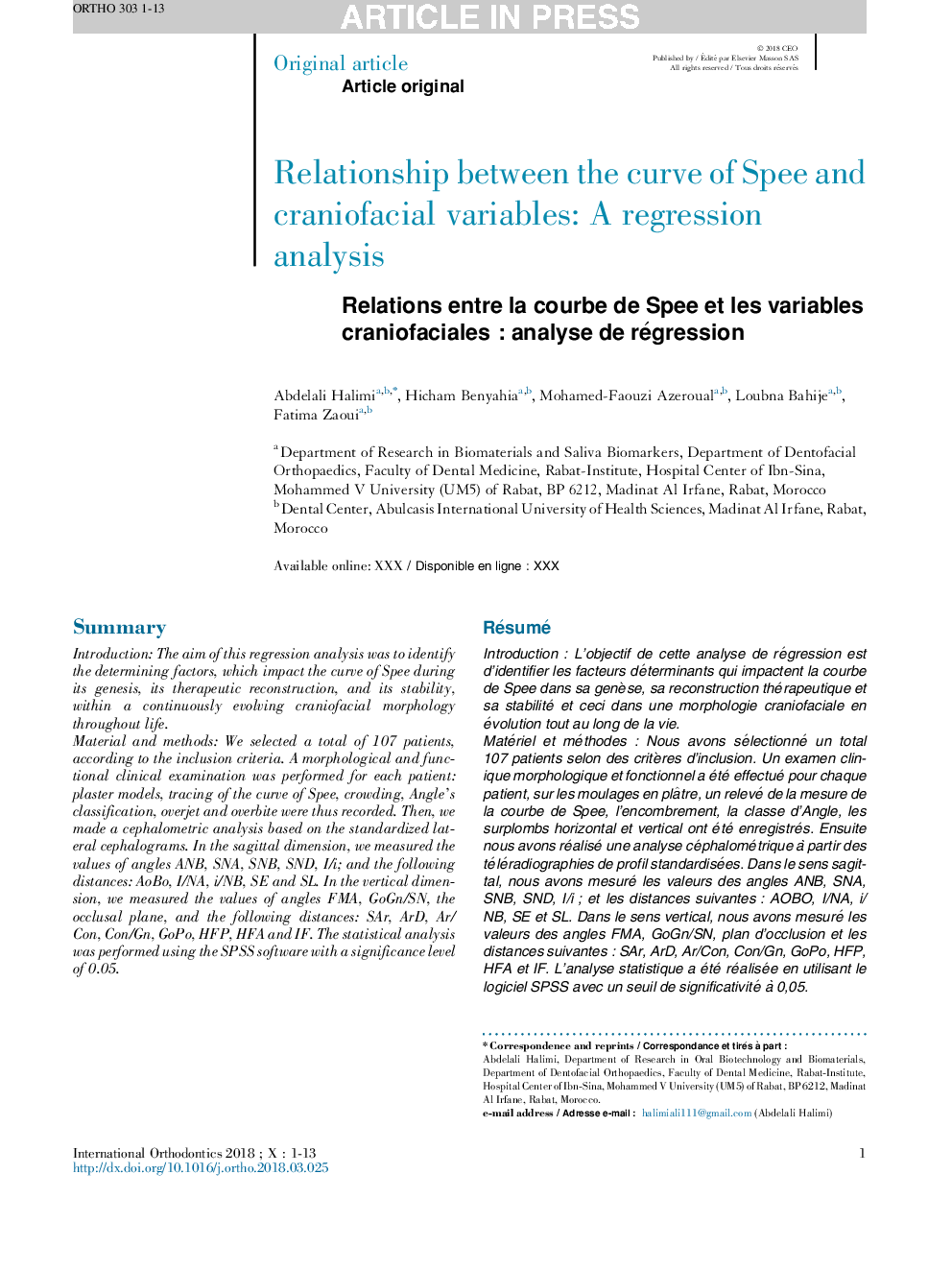| کد مقاله | کد نشریه | سال انتشار | مقاله انگلیسی | نسخه تمام متن |
|---|---|---|---|---|
| 8697961 | 1584651 | 2018 | 13 صفحه PDF | دانلود رایگان |
عنوان انگلیسی مقاله ISI
Relationship between the curve of Spee and craniofacial variables: A regression analysis
دانلود مقاله + سفارش ترجمه
دانلود مقاله ISI انگلیسی
رایگان برای ایرانیان
کلمات کلیدی
موضوعات مرتبط
علوم پزشکی و سلامت
پزشکی و دندانپزشکی
دندانپزشکی، جراحی دهان و پزشکی
پیش نمایش صفحه اول مقاله

چکیده انگلیسی
Our sample including 107 subjects was composed of 77 female patients (71.3%) and 30 male patients (27.8%) 7 hypodivergent patients (6.5%), 56 hyperdivergent patients (52.3%) and 44 normodivergent patients (41.1%). Patients' mean age was 19.35 ± 5.95 years. The hypodivergent patients presented more pronounced curves of Spee compared to the normodivergent and the hyperdivergent populations; patients in skeletal Class I presented less pronounced curves of Spee compared to patients in skeletal Class II and Class III. These differences were non significant (P > 0.05). The curve of Spee was positively and moderately correlated with Angle's classification, overjet, overbite, sellion-articulare distance, and breathing type (P < 0.05). We found no correlation between age, gender and the other parameters included in the study with the curve of Spee (P > 0.05). Seventy five percent (75%) of the hyperdivergent patients with an oral breathing presented an overbite of 3 mm, which is quite excessive given the characteristics often admitted for this typology; this parameter could explain the overbite observed in the hyperdivergent population included in this study. For the multivariate analysis, the overbite and the sellion-articulare distance remained independently related to the curve of Spee according to the breathing type, Angle's classification, and overjet. This regression model explains 21.4% of the changes in the curve of Spee.
ناشر
Database: Elsevier - ScienceDirect (ساینس دایرکت)
Journal: International Orthodontics - Volume 16, Issue 2, June 2018, Pages 361-373
Journal: International Orthodontics - Volume 16, Issue 2, June 2018, Pages 361-373
نویسندگان
Abdelali Halimi, Hicham Benyahia, Mohamed-Faouzi Azeroual, Loubna Bahije, Fatima Zaoui,